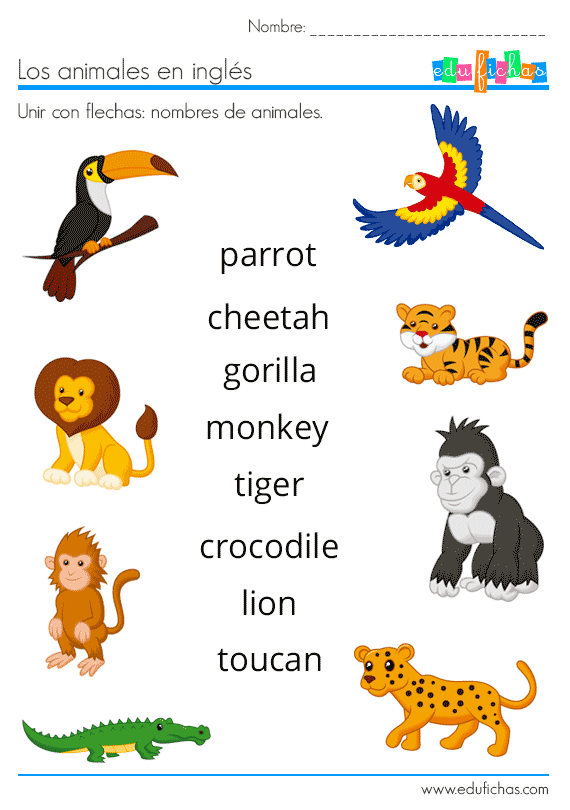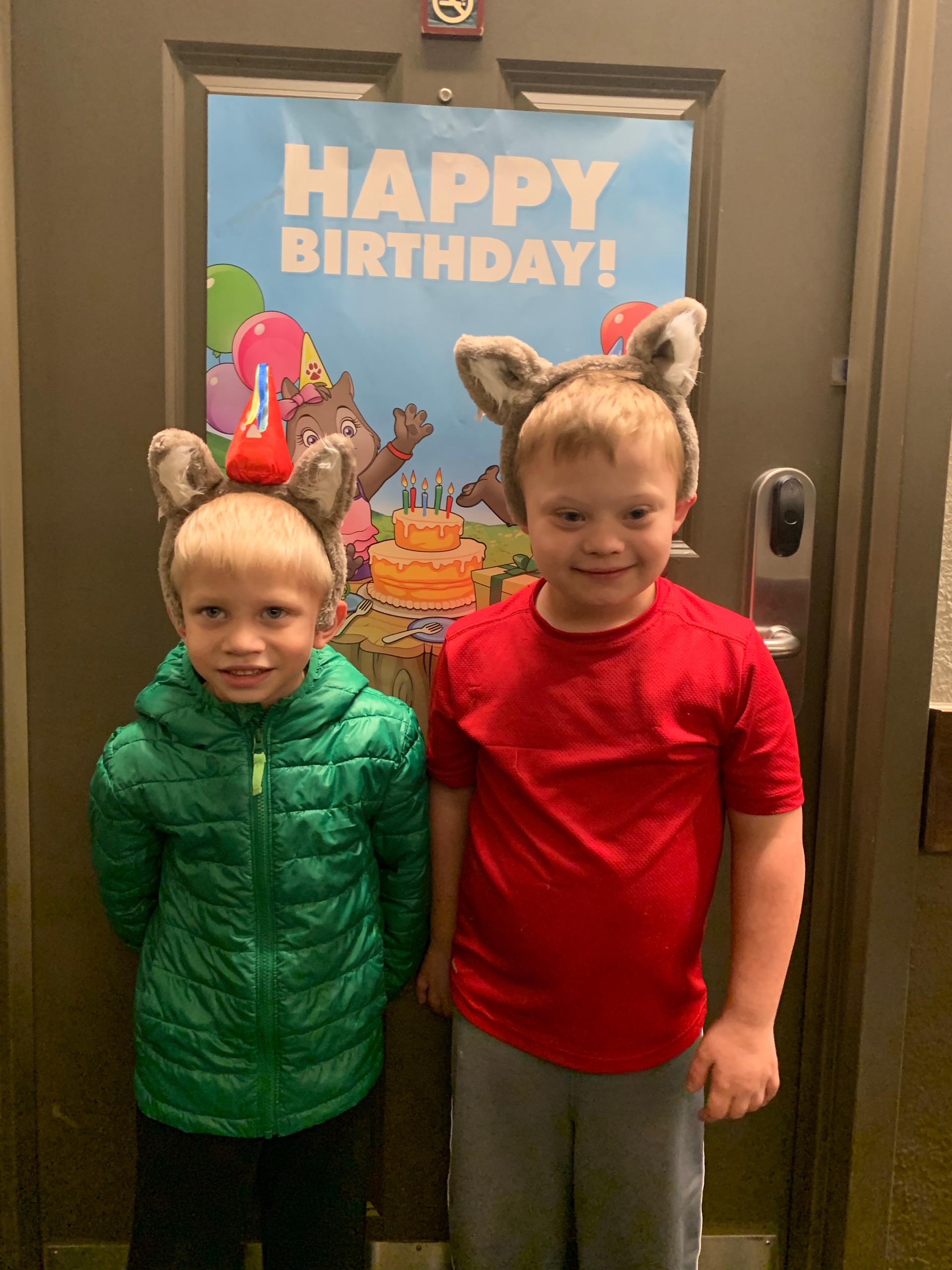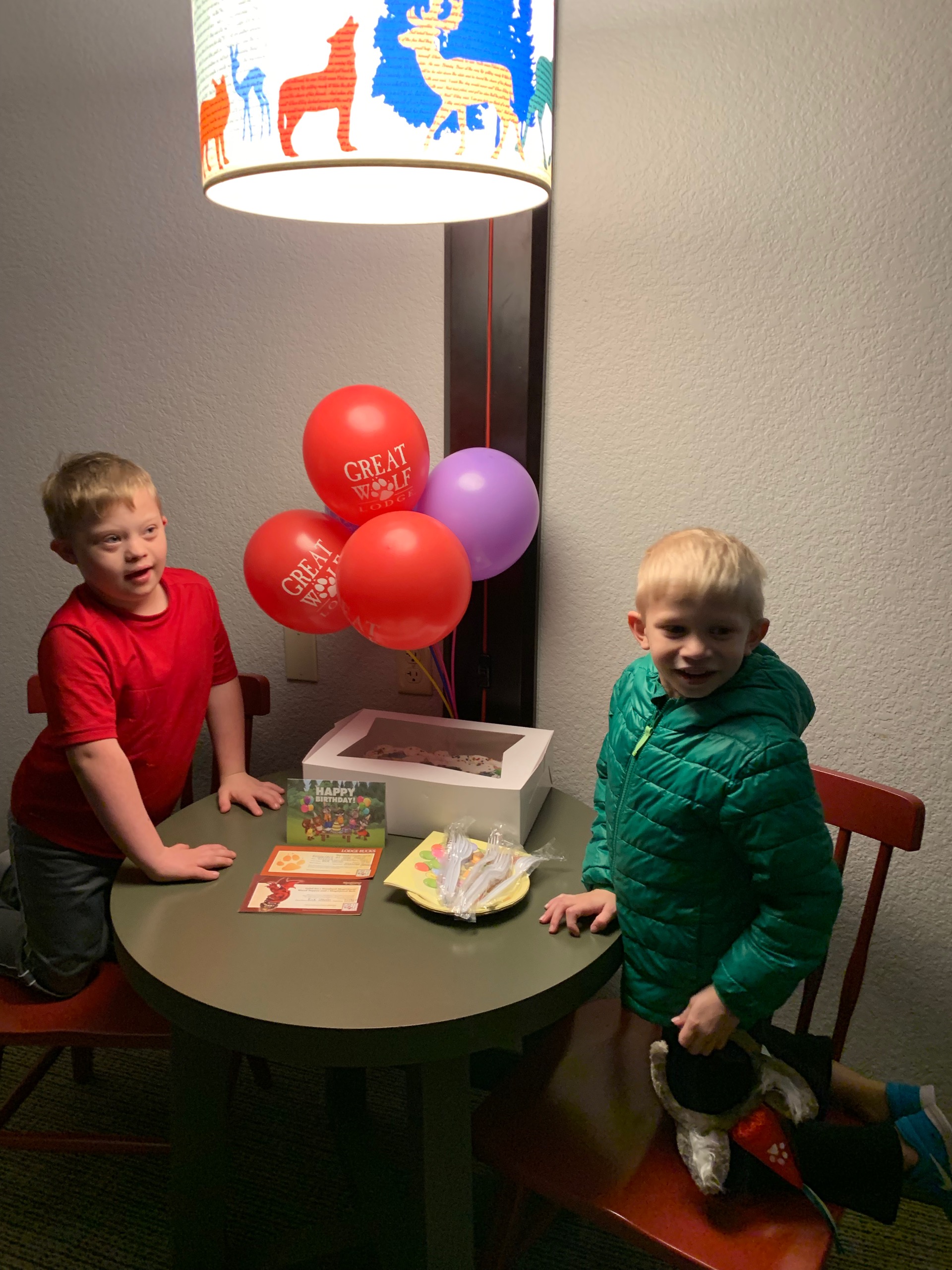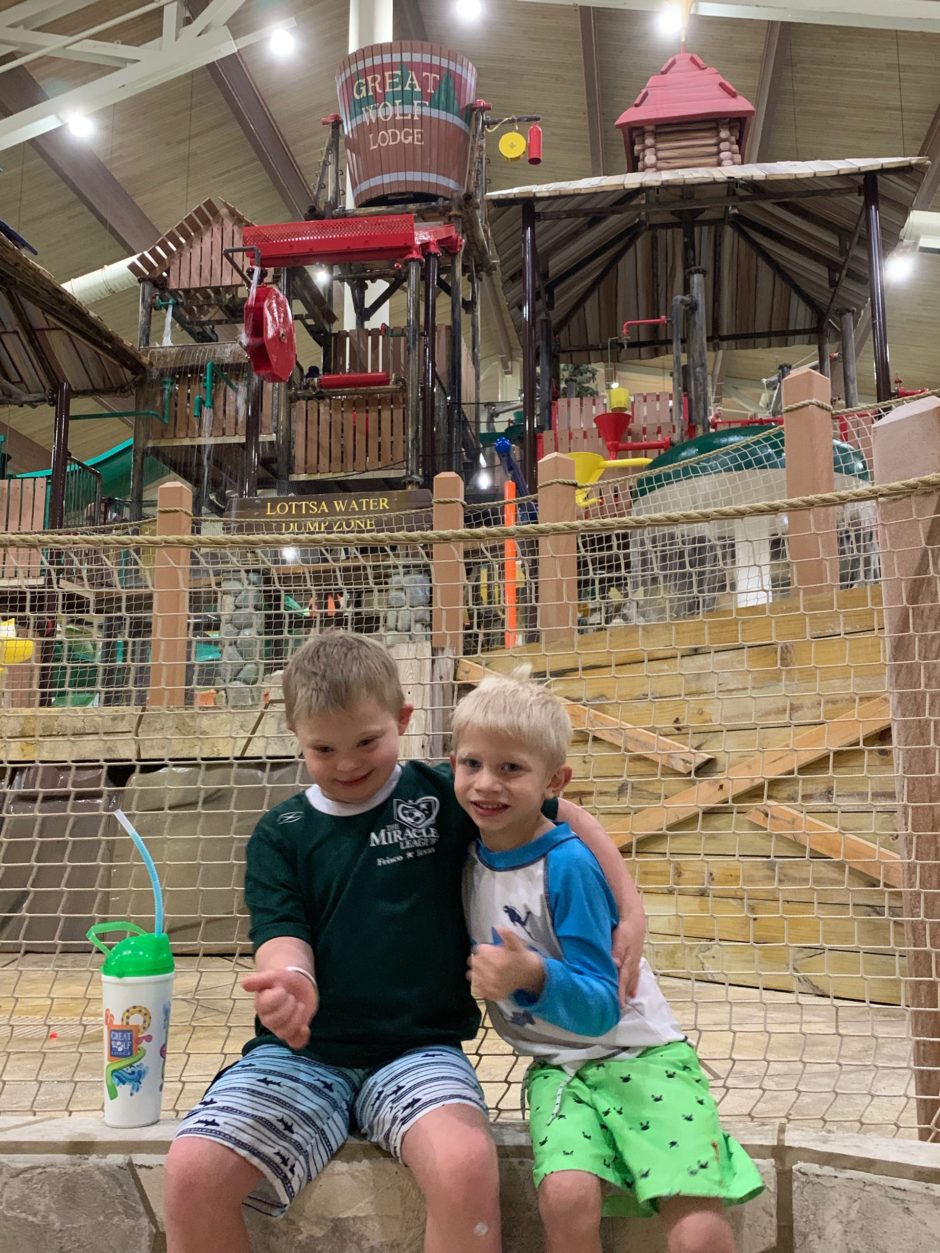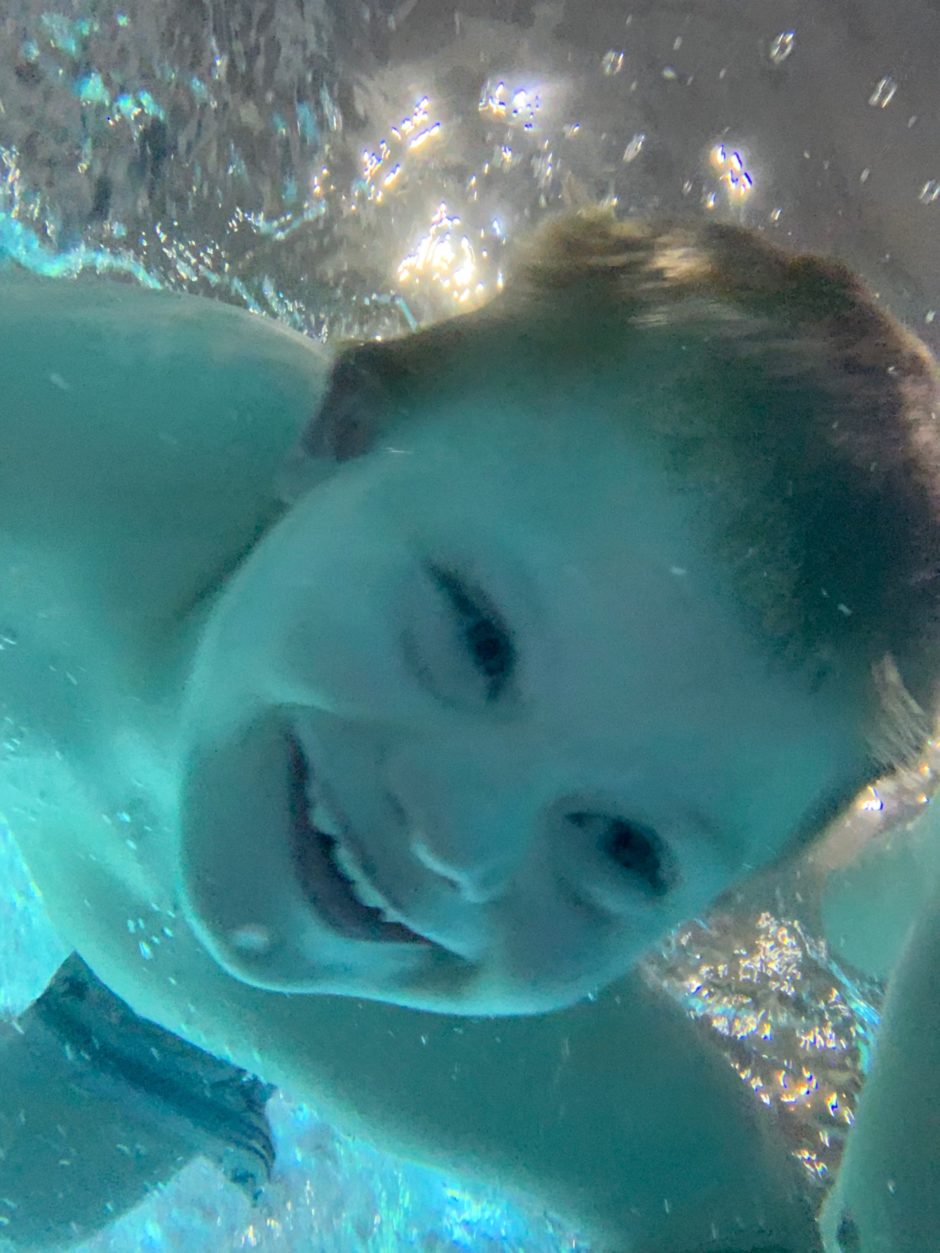Oh, my God, no! ¡Gramática inglesa, no! ¡Huyamos! I’m sorry, pero esto es lo que hay hoy: gramática inglesa por un tubo y los mejores trucos sobre cómo aprender gramática inglesa. Agárrate bien fuerte, amig@, que vienen curvas muy, pero que muy interesantes.
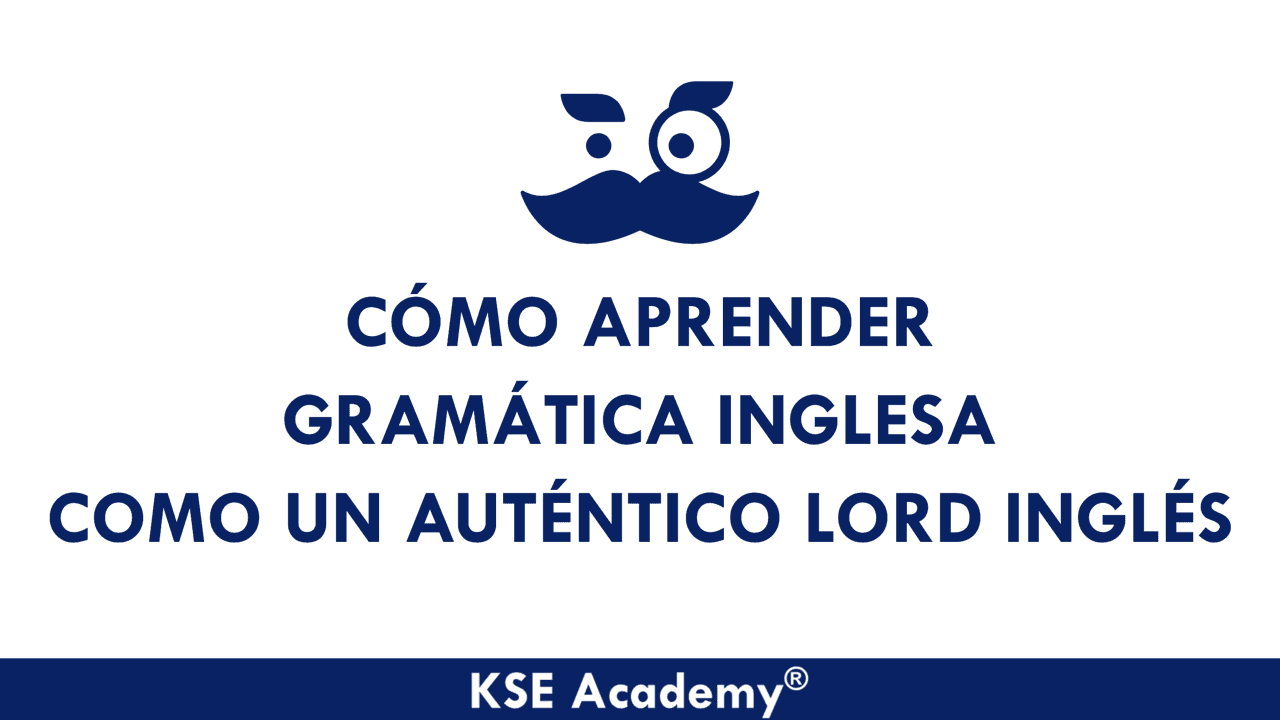
¿Qué es gramática, tesoro?
La gramática inglesa es la leche. ¿Por qué? Porque lo digo yo y punto.  No, en serio, la gramática inglesa es lo más fácil que tiene este idioma. Te lo digo de veras.
No, en serio, la gramática inglesa es lo más fácil que tiene este idioma. Te lo digo de veras.
La mayoría de los alumnos se echan las manos a la cabeza cuando digo en clase “Now we’re going to do a bit of grammar”, pero sinceramente, a mí me encanta, y se me nota en la cara. 
Pero, ¿qué es la gramática? La gramática de un idioma es el sistema de elementos y estructuras mediante el cual funciona un idioma. Es como el pegamento que une todas las palabras y hacen que podamos construir frases y oraciones. Por eso me encanta. Y me encanta explicar cómo funcionan las palabras en inglés y cómo interactúan entre ellas para crear mensajes. Es precioso.
Por qué es importante estudiar gramática
Por si no te ha quedado claro en el párrafo anterior, la gramática nos permite jugar con el lenguaje para expresar diferentes cosas, por eso es tan importante.
Vale, Luis, pero es que hoy día hay mucha gente que dice que no merece la pena estudiar gramática, que lo que hay que hacer es hablar el idioma desde el primer día y punto. Menos gramática y más hablar.
Pues a esa gente me los como yo con patatas.  A ver, yo soy partidario de empezar a producir (hablar y escribir) desde el primer día. No todo el mundo opina igual, pero yo sí. Y también creo que en nuestro sistema educativo uno de los mayores problemas que ha habido en cuanto al aprendizaje de inglés ha sido una excesiva atención a la gramática y al vocabulario traducido en listas, y muy poco enfoque comunicativo. De eso no hay duda. Pero no se puede ser tan cenutrio como para afirmar que no hay que estudiar gramática.
A ver, yo soy partidario de empezar a producir (hablar y escribir) desde el primer día. No todo el mundo opina igual, pero yo sí. Y también creo que en nuestro sistema educativo uno de los mayores problemas que ha habido en cuanto al aprendizaje de inglés ha sido una excesiva atención a la gramática y al vocabulario traducido en listas, y muy poco enfoque comunicativo. De eso no hay duda. Pero no se puede ser tan cenutrio como para afirmar que no hay que estudiar gramática.
No se puede ser tan cenutrio como para afirmar que no hay que estudiar #gramática.
Clic para tuitear
La gramática inglesa (y la de cualquier idioma) hay que estudiarla sí o sí, pero es cierto que se puede hacer de muchas formas, unas más explícitas y otras menos. Yo soy partidario de un término medio: entender cómo funciona y cuándo se da una función gramatical en particular, y luego practicarla hasta la saciedad en conversación y por escrito. Mis alumnos pueden confirmarte esto.  Además, hoy en día existen infinidad de recursos de gramática inglesa online que pueden ayudarte, empezando por los consejos que te voy a dar en este post. Así que vamos al lío.
Además, hoy en día existen infinidad de recursos de gramática inglesa online que pueden ayudarte, empezando por los consejos que te voy a dar en este post. Así que vamos al lío.
Cómo estudiar gramática inglesa sin morir en el intento
Lo bonito de aprender un idioma es que no hay una sola forma para aprenderlo. Cada persona debe desarrollar su propio método de aprendizaje. Y lo curioso es que, quien no desarrolla un método propio, normalmente no aprende ni bien ni rápidamente. Esto lo tengo más que comprobado.

Con la gramática inglesa, al ser parte de un idioma, pasa lo mismo: no todos estudiamos ni aprendemos gramática inglesa de la misma forma, y es esencial que desarrolles tu propio método. Y eso es algo que debes entender desde ya. Además, has de ser muy constante, si no, olvidarás todo o casi todo lo aprendido.
Así que, sin más dilación, pasemos a los mejores consejos para aprender gramática inglesa jamás contados (por mí).
Empieza desde abajo
En cierto modo, la gramática del inglés es como las matemáticas. En matemáticas, necesitas saber sumar para entender una multiplicación y para posteriormente resolver problemas. En inglés, como en cualquier idioma, la gramática funciona así: si no dominas los principios básicos, no podrás avanzar.
Por ponerte un ejemplo así muy obvio: si no dominas el verbo to be, olvídate de construir oraciones pasivas.
Así que, por muy avanzado que creas que sea tu inglés, si ves que tienes algún fallo que se repite y no sabes muy bien por qué, no dudes en volver a consultar tus apuntes de gramática básica para subsanar ese error y evitar que se enquiste y se convierta en un vicio.
Entiende cómo funcionan los verbos en inglés
Continuando con el punto anterior, tienes que saber que entender cómo funcionan los verbos en inglés es absolutamente esencial. Además, es muy fácil. Aquí tienes una tabla hipermegaútil de la muerte:
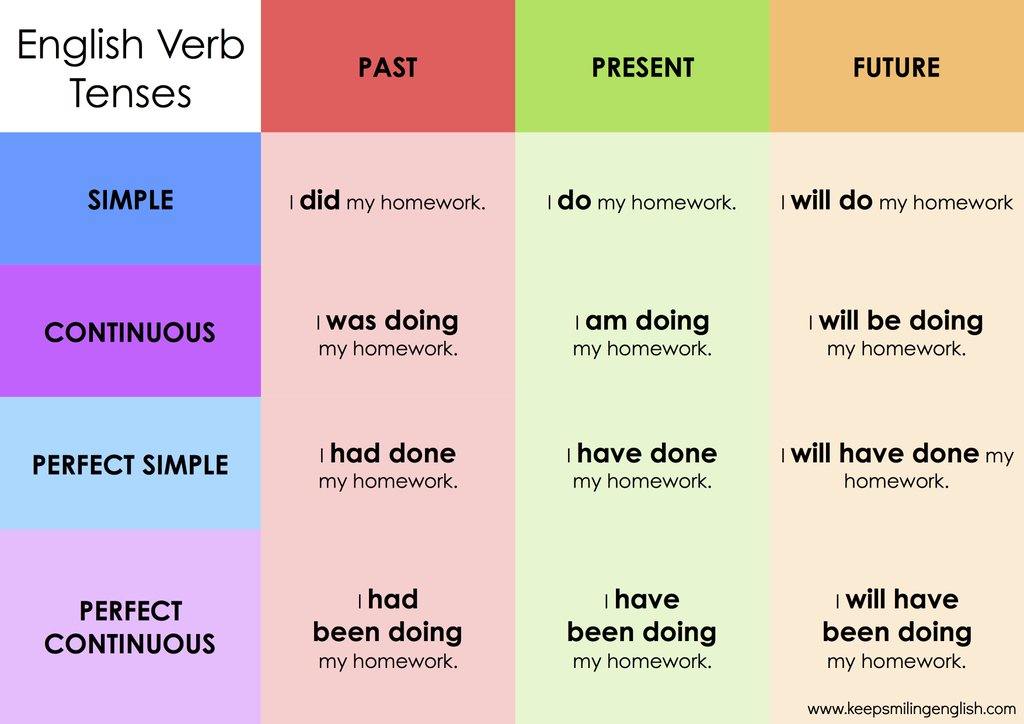
Te voy a dar unos consejos así al vuelo que te ayudarán mucho si aún no tienes claro cómo hacer construcciones verbales compuestas en inglés:
- Existen tres tiempos de los que podemos hablar: pasado, presente y futuro. (¡Qué sorpresa!)
- Dentro del pasado, presente y futuro, existen tiempos verbales simples, perfectos, continuos y perfectos continuos.
- Los tiempos verbales simples son la forma más básica de cada tiempo (pasado, presente y futuro).
- Todos los tiempos perfectos (perfect) llevan have y un participio pasado. Have se conjuga en el tiempo que corresponda (pasado, presente o futuro).
- Todos los tiempos continuos (continuous) llevan be y un participio presente (-ing). Be se conjuga en el tiempo que corresponda (pasado, presente o futuro).
- Los tiempos perfectos continuos (perfect continuous) llevan have been y un participio presente (-ing). Have se conjuga en el tiempo que corresponda (pasado, presente o futuro).
- Los tiempos futuros llevan will seguido de un infinitivo.
- Los tiempos verbales pasivos se construyen con be y un participio pasado. Be se conjuga en el tiempo que corresponda (pasado, presente o futuro).
Entendiendo estas premisas, y sabiendo las formas verbales, obviously, ya puedes identificar y construir los diferentes tiempos verbales:
- Present perfect del verbo work: have/has worked.
- al ser perfecto, lleva have
- al ser presente, have va en presente (have/has)
- añadimos el participio pasado de work: worked
- RESULTADO: have/has worked
- Pasado continuo de study: was/were studying
- al ser continuo, lleva be y un participio presente
- al ser pasado, be va en pasado (was/were)
- añadimos el participio presente de study: studying
- RESULTADO: was/were studying
- Futuro perfecto continuo de write: will have been writing
- al ser futuro, lleva will y un infinitivo
- al ser perfecto, lleva have (en infinitivo) y un participio
- al ser continuo, lleva el verbo be (en participio) y un participio presente
- añadimos el participio presente de write: writing
- RESULTADO: will have been studying
Conociendo y entendiendo estas verdades universales de los tiempos verbales ingleses, no tendrás problemas en identificarlos y saber construirlos. Otra cosa es saber para qué se usan y cómo usarlos bien, pero al menos ya sabrás construirlos. Algo es algo. 
Entonces, mi recomendación es que, si te interesa aprender inglés bien, intenta entender bien cómo funcionan los verbos desde el principio, ya que así evitarás knowledge gaps que te serán un impedimento en el futuro para seguir avanzando. Y, obviamente, decirte que los verbos son esenciales en la gramática es una perogrullada como una catedral de grande.
Sé versátil
Cambiemos un poco de tercio, que se me ha ido la olla un poco y me he emocionado demasiado en el punto anterior.
Para dominar la gramática inglesa has de ser versátil. Vas por mal camino si crees que leyéndote el punto anterior y haciendo ejercicios de un libro de texto vas a usar la gramática como un Lord inglés. No freaking way, mate.
¿Y cómo puedo ser versátil, Luis? ¿¡CÓMOOOOO?! Pues muy fácil: empápate de todo y utiliza lo que aprendas todo lo que puedas. Por ello, siempre recomiendo a mis alumnos leer mucho, ver muchas pelis y series, y escribir y hablar todo lo posible en cualquier contexto. Todo vale y mientras más mejor.

¿Qué conseguiremos siendo versátiles en nuestro estilo de aprendizaje? Pues para empezar exponernos a toda la gramática posible y, sobre todo, practicarla. De este modo irás “poniendo cara” a los diferentes puntos gramaticales del inglés, por así decirlo. Es decir, quizás has estudiado las pasivas en clase, pero realmente no tienes ni puñetera idea de realmente dónde narieces aparecen las pasivas aparte de en la unidad 8 de tu libro de inglés. Por eso, mi consejo es: ponte a leer, champion, ya verás como te vas a encontrar con más de una pasiva. Coge un artículo de periódico y empápate, ya verás como alguna que otra pasiva vas a encontrar.
A eso me refiero cuando digo que le pondrás cara a la gramática inglesa que has estudiado. Y mientras más versátil y variado sea tu estudio, más gramática identificarás a tu alrededor.
Utiliza libros para practicar, sin miedo
Todos tenemos el típico amigo tonto que ha estado en Inglaterra y se cree que es un máquina porque dice gonna todo el rato, aunque su gramática sea pésima y su vocabulario tristemente pobre. Este es el que te dice, sin cesar, que “lo que hay que hacer es hablar e irte al extranjero”; que “un idioma no se estudia, se vive”. Pfffff! Me parto toda la caja.
Irse al extranjero a aprender inglés está genial, pero no es necesario para aprender un idioma. De verdad te lo digo. Y uno de los recursos que podemos y debemos utilizar para aprender gramática inglesa son los libros de texto. Hoy en día hay una variedad infinita y algunos muy buenos que te pueden ayudar a entender y practicar la gramática.
Y no tengas miedo de utilizarlos hasta la saciedad. Lo importante, como te he dicho antes, es que el libro de texto de gramática sea parte de tu método de estudio, no lo único que hagas. Si lo combinas con la lectura, la escritura y la práctica oral de Speaking y Listening, el libro de texto será uno de tus mejores aliados. Believe me!
El libro de texto de gramática debe ser parte de tu método de estudio, pero no el único recurso.
Clic para tuitear
No pierdas oportunidades de ponerla en práctica
En este sentido no creo que deba añadir mucho más, ¿no? El gramático se hace, no se nace, pequeño saltamontes. Y se hace a base de bien, machacando y practicando. Así que todo lo que vayas aprendiendo, ve poniéndolo en práctica en cada ocasión que puedas. Si no, estos conocimientos y estas habilidades nuevas irán cayendo en desuso y, por desgracia, en el olvido. En tu olvido, más concretamente, y serás incapaz de utilizarlo cuando de verdad te haga falta. Qué pérdida de tiempo y esfuerzo es estudiar algo para luego olvidarlo, ¿no crees? Pues eso, ¡practica mucho!
Abre tu mente, mi joven padawan

Uno de los problemas más grandes que tienen algunos estudiantes de inglés para aprender el idioma es que son muy cerrados en cuanto a los idiomas se refiere. Si realmente quieres dominar una lengua extranjera, tienes que entender que el mundo no gira alrededor de tu lengua materna.
No existen dos idiomas iguales y ningún idioma es la traducción de otro. ¿Por qué debes entender esto? Porque mucha gente no entiende, por ejemplo, por qué en español decimos tener 31 años pero en inglés se dice ser 31 años (be 31 years old; ser en vez de tener). Y cuál es la respuesta a ese ¿por qué?, pues porque sí y punto. Es así y no le des más vueltas.
Cada idioma ha evolucionado a la par que sus hablantes, en un contexto social, histórico y cultural que es imposible de entender al cien por cien. Y si un idioma ha evolucionado así, ¿quién eres tú para cuestionar por qué funciona de una manera u otra? Y la gramática inglesa es simplemente un ejemplo más de esto. Y además, es mucho menos compleja que la gramática española, así que da las gracias y no te quejes demasiado. 
Una vez que entiendas que el inglés no es la traducción del español, te será más fácil ir asimilando su gramática y sus peculiaridades.
Habla p’adentro
Hablar p’adentro es otra de las técnicas que más recomiendo a mis alumnos, especialmente a los más beginners. Y cuando digo que hables hacia dentro no es que aspires al hablar como si estuvieras corriendo medio ahogado, no. A lo que me refiero es a que te hables a ti mismo en inglés, e incluso vocalices. Y si estás solo, aprovecha para marcarte un monólogo.
En serio, esto funciona. De hecho he leído más de una vez que esto se lo recomiendan a las personas que tartamudean para mejorar su habla, así que debe ser eficaz. En cuanto a la gramática inglesa, imagínate que has estudiado el estilo indirecto y los reporting verbs y te cuesta memorizarlos porque, joder, son muy chungos. Pues bien, una manera fenomenal de ir interiorizando cómo funcionan es hablando “en tu mente” o en voz baja. De este modo cuando de verdad te hagan falta no será la primera vez que tu mente haya hecho el esfuerzo de utilizarlos, por lo que te resultará más fácil ponerlos en práctica y usarlos de manera correcta.
Sé constante
Este es, sin duda, el consejo más aburrido. Pero también es, probablemente, el más determinante. Si pretendes aprender el inglés y su gramática poniéndote un rato antes de tu examen… deja de leer ya porque eres un caso perdido.
Un idioma, que te quede claro, no es una asignatura, aunque desgraciadamente se trate como tal. Un idioma no se memoriza y se “vomita” en un examen. Si pretendes aprender inglés y dominar la gramática inglesa, debes ser muy constante. Piensa que aprender inglés es como entrenar en el gym. ¿Te vas a poner en forma en un fin de semana? No. Pues lo mismo pasa con un idioma. Es una carrera de fondo que únicamente completan los que más se esfuerzan. Has de ser constante para seguir progresando.
Un idioma no se memoriza y se “vomita” en un examen.
Clic para tuitear
Consulta con tu farmacéutico
Vale, quizás tu farmacéutico no sabe inglés. Lo que quiero decir con esto es que cuentes con la experiencia y el apoyo de algún experto. Y con esto no me refiero a “un guiri cualquiera que hable inglés”. Curiosamente, los guiris que no han estudiado lingüística en la universidad no tienen ni papa de gramática, hasta el punto de no saber lo que es una pasiva o el estilo indirecto, por mucho que lo utilicen correctamente.
Por ese motivo, te recomiendo que cuentes con la ayuda de un profesor de inglés que entienda bien la gramática y, sobre todo, sepa cómo explicarla de manera sencilla para que la entiendas. Esto te ayudará muchísimo; mucho más que cualquier libro de gramática en inglés.
Cual es el mejor libro de gramática inglesa
Probablemente el mejor libro de gramática inglesa que existe sea el English Grammar in Use de Raymond Murphy, nivel intermedio. Bueno, en realidad, no creo que haya un solo libro que sea el mejor, ya que a cada alumno le puede funcionar un libro mejor o peor. Pero a día de hoy, creo que ese es el que mejor funciona con la gran mayoría de estudiantes de inglés.
Por qué elegir English Grammar in Use
Bueno para empezar, tiene todos los puntos gramaticales necesarios para dominar el inglés. Empezando desde cero y llegando a un buen nivel intermedio-alto para cada punto gramatical. Además, las explicaciones son muy claras y el diseño del libro es muy bueno, especialmente desde la cuarta edición.
Para seguir, y esto es lo que realmente me interesa, es que hace hincapié en lo de in Use. Es decir, es todo lo que se explica y se practica se hace en contexto y de la manera más natural posible, teniendo en cuenta que no deja de ser un libro de gramática.
Además, con este libro no solo aprendes gramática, sino que también aprenderás mucho vocabulario. Esto ocurre porque, curiosamente, para resolver muchos de los ejercicios te será necesario también conocer el significado de muchas palabras, por lo que no te queda más remedio que aprenderlas sobre la marcha.
Por eso, si tu nivel de inglés está entre mediocre y no tan mediocre, y estás pensando en comprar un libro de gramática inglesa, deberías plantearte comprar el English Grammar in Use de Raymond Murphy. No te decepcionará.
Conclusión
El inglés mola, y su gramática también. Y si quieres estudiar gramática inglesa bien y que te cunda como Dios manda, no olvides los consejos que te he dado para estudiarla. Te aseguro que en este tipo de trucos y comportamientos radica la diferencia entre un buen aprendiz y uno malo. Y supongo que si estás leyendo esto no querrás ser de los últimos, ¿no?
Pues eso. Y don’t forget to keep smiling! Incluso cuando el inglés y su gramática te las haga pasar canutas.
La entrada Cómo aprender gramática inglesa como un auténtico Lord inglés 🧐 aparece primero en KSE Academy | Academia de inglés.
from KSE Academy | Academia de inglés https://ift.tt/2FwKYhf
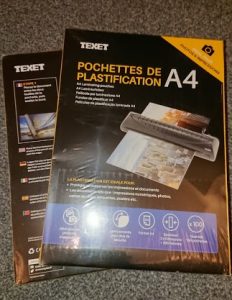
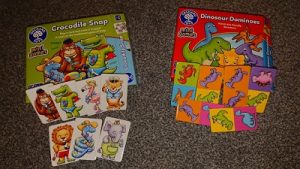
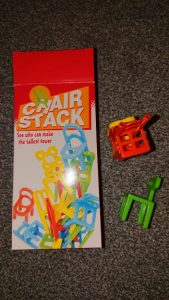
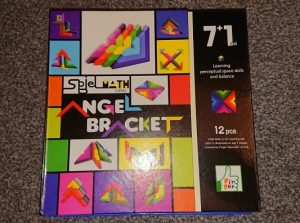
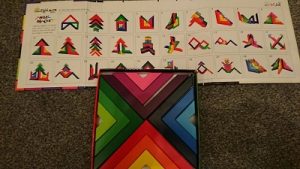

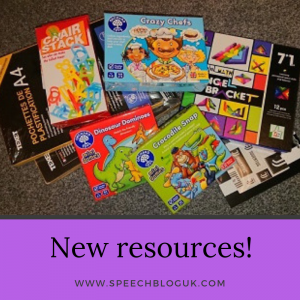



 No, en serio, la gramática inglesa es lo más fácil que tiene este idioma. Te lo digo de veras.
No, en serio, la gramática inglesa es lo más fácil que tiene este idioma. Te lo digo de veras.
 Además, hoy en día existen infinidad de
Además, hoy en día existen infinidad de 









